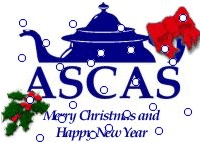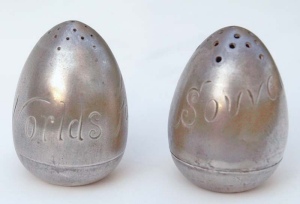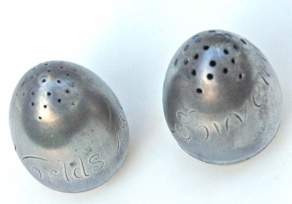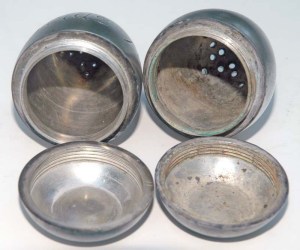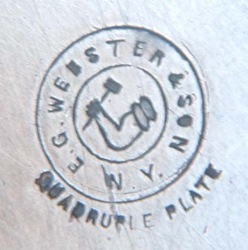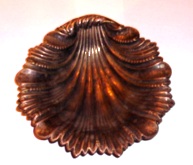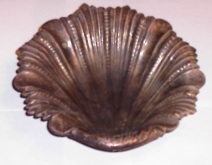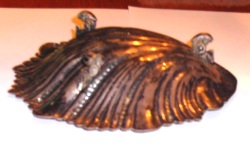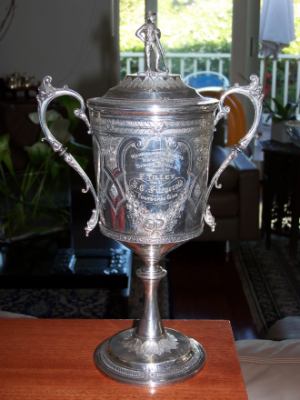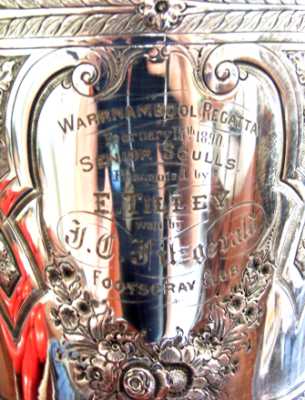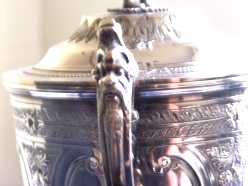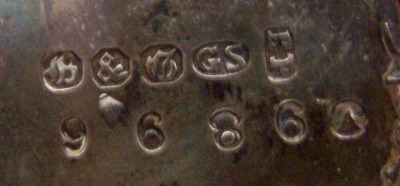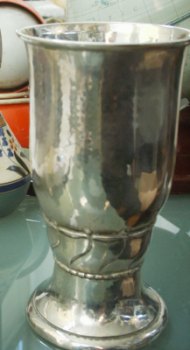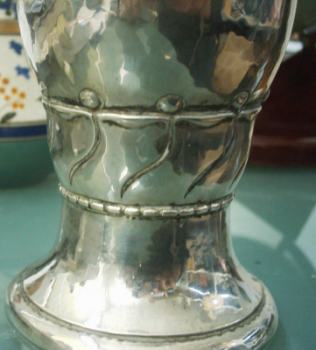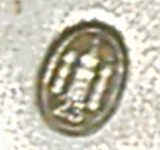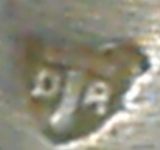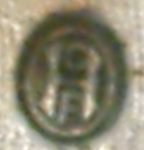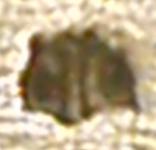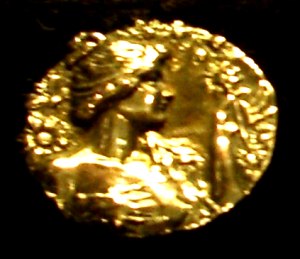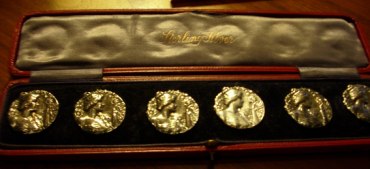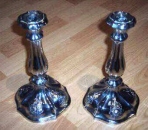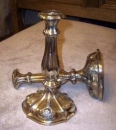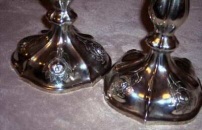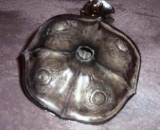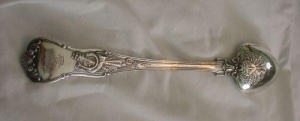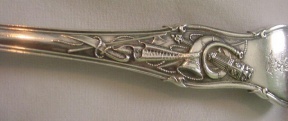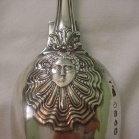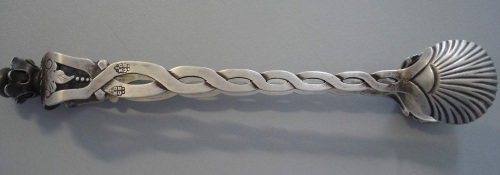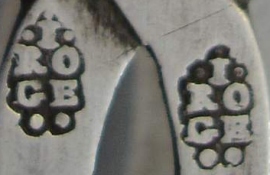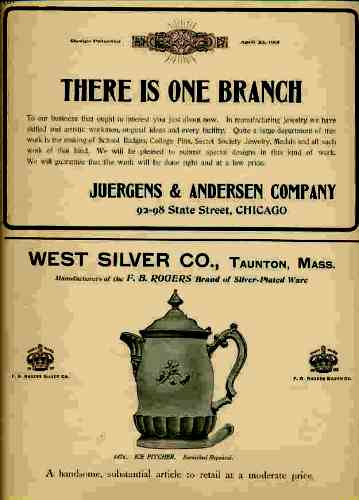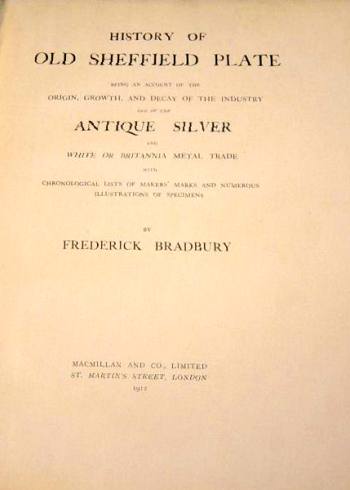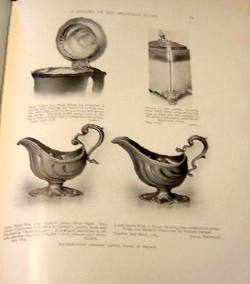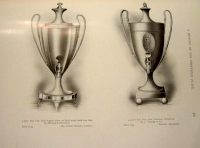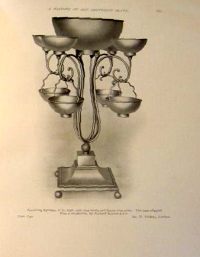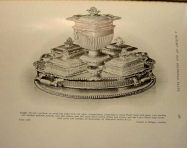 newsletter # 43 - DECEMBER 2007
newsletter # 43 - DECEMBER 2007www.ASCASonline.org
email: silverassociation@yahoo.it
YOUR GUIDE TO DECEMBER NEWSLETTER:
articles new members
members' window
|
2008 ASCAS membership
No fees are requested nor accepted for ASCAS membership.
Members still interested to ASCAS and its activity are invited
to send an e-mail to
confirming their 2008 membership (the simplest way is to
use the 'reply' button on our December e-mail).
I apologize for this little effort requested to whomever
appreciates and supports ASCAS activity.
No action is requested to unsubscribe. Members not confirming
their membership will be automatically deleted and shipping of
our monthly Newsletter will be suspended on February
2008.
Giorgio Busetto
ASCAS Secretary
LETTER TO MEMBERS
After many months (last July 2007) ASCAS presents two new articles. I was for a long time doubtful about the decision to publish two new articles in December. The "reserve" of available articles is small and this choice may penalize the regularity of future issues.Anyway the choice is done and I'm faithful that your help will grant a great future to ASCAS and its Newsletters.
My best wishes of a Merry Christmas and a Happy 2008.
Giorgio Busetto
Two new articles for ASCAS website
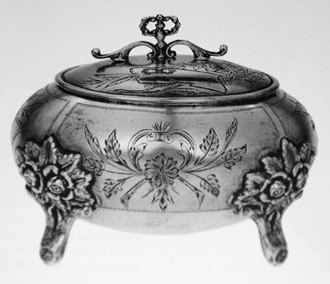 Paulina Wojdak presents:
Paulina Wojdak presents:19th Century Sugar Boxes in Poland Volumes were written about silver forms in gothic, renaissance and baroque, but hardly silver collectors have knowledge and information about Polish silver. The objective of this article is to familiarize collectors with 19th century Polish sugar boxes and illustrate types and varieties of these daily used items....... click here |
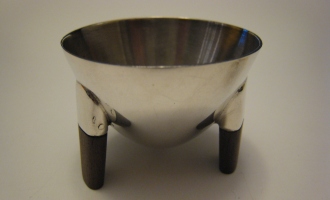 Linda Drew presents:
Linda Drew presents:The World of Mexican Silver Salts "Worthwhile silver requires that it be identified with the name and reputation of its maker" William Spratling The history of silver in Mexico combines both legend and fact. Taxco is the center - it is located between Acapulco and southwest of Mexico City in the hills. Before the Spanish arrived, the native Indians called it TLACHO meaning the place of the ballgame. According to local legend, the Aztecs had the locals pay tribute to them with gold bars. Cortes conquered the Aztecs in 1521 and then staked his mining claim in Taxco....... click here |
New members
Welcome to new ASCAS members:
Piergiorgio Brini - Italy
Vincent de la Celle - France
Damien Francois - Belgium
Katy Galewski - USA
Eva Ghazi - USA
Ronald Kurstin - USA
Jane Lawnhurst - USA
Regina Mears - USA
Katherine Palthey - France
Christopher Raynor - England UK
Malcolm Rice - England UK
Robert C. Rust - USA
Graham Spiers - England UK
Mark Stedman - USA
Donna Thomasson - USA
Marisue Traina - USA
Joanne Wilkinson - USA
Members' Window # 43
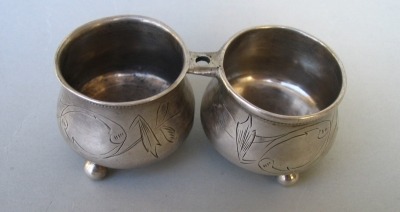
|
Mail to ASCAS: e-mail silverassociation@yahoo.it
Deb Sacco writes:
... I was wondering if you could help me date these egg shape
salt & pepper shakers.
I can't locate any information on them. They are marked E.G.
Webster & Son, Quadruple Plate and one is inscribed "Worlds
Fair", the other "Souvenir".
I understand the trademark would date them 1873-1923. Correct me
if this is in error.
To the best of my knowledge, these are circa 1898 - 1901. Likely
1898 Trans-Mississippi and International Exposition - Omaha,
Nebraska. Or possibly Buffalo N.Y. 1901(Pan-American).
Other Worlds Fairs do not fit in with the trademark. My family
was in the Omaha area post 1895 so I think the 1898 Expo in
Omaha is most likely but can't document Webster items
availability at any of the fairs or expos.
Do you know if other Webster & Son items are known from these
expos?
Deb Sacco
Ben Arnold writes:
... I was given the plate silver dish some time ago and am
attempting to find out something about it. As you can see, it
has little silver left and I don't imagine it's worth much, but
I like to know the age, the history of things.
I found the marks, "W" within a shield, a compass, "A" within a
shield, and have determined that it was made by William Adams (Founded
1865), Birmingham, UK and New York, USA. Also, it had the number
49342 impressed upon its bottom, presumably a model number.
I am not at all sure it's a butter dish; I simply found
something very much like it online by another maker and that was
described as a shell butter dish.
Can you suggest a good reference book for William Adams' works?
The history of this particular William Adams' company?
Do you, perhaps, know a better name for the type of dish this is?
Thank you.
Ben Arnold
John C. Fitzgerald writes:
... My grandfather won a cup in 1890 for the Senior Sculls at
the Warrnambool Regatta in Victoria, Australia.
The cup is 15.5cms high and 10cms wide from handle to handle.
The only damage is to what looks like an oar, being held by the
figure on top of the cup. What would be the oar's blade had been
broken.
The handles are emblazoned with a most expressive bearded man's
visage.
The cup was presented to my paternal grandfather (J. C.
Fitzgerald) for winning the Senior Sculls on the 15th February
1890 at the Warrnambool Regatta. The inscription recites the cup
was presented by "Ë. Tilley" and that my grandfather was of the
Footscray Club (Footscray being a suburb of Melbourne situated
on the Maribyrnong River).
Warrnambool is a seaside city 365 Kilometres East of Melbourne.
Now a centre for several small industries and for holidays but
in the mid to late 19th century a bustling port and entry to the
gold fields of Victoria and export port for the wool and produce
of Western Victoria.
In the late 19th century and early 20th sculling and bike riding
were dominant sports in Australia and both were professional. My
grandfather was well known and a champion in both sports.
I attach also the photo of the Hallmark on the bottom of the cup.
Can you or someone you can refer me to help me to identify the
markings
John C. Fitzgerald
Your cup was made by Boardman, Glossop & Co, Sheffield.
The mark B&G CS is quoted also in my private website at
http://www.silvercollection.it/SILVERPLATEHALLMARKSB.html.
Thank you for sharing with us your interesting information about
a forgotten event.
Giorgio Busetto
Damien Francois writes:
... I found your web site researching information about an
item I bought recently. It is extremely informative ....
particularly for a novice as I am for silver matter.
About my piece, I know only that it was made in Denmark but the
meaning of "HCF" and " DTA" (or D "hammer" A ?) marks is unknown
to me.
Thank you in advance for your help.
Damien Francois
HCF is the assayer's mark of Christian Fr. Heise (active
1904-1932) and your item was made in 1923.
I'm unable to identify the maker, but I'll publish your question
in December Newsletter and I trust on ASCAS members for an
exhaustive reply to your question.
Giorgio Busetto
Dave Weinhandl writes:
... I enjoy your site. I was searching for the definition of
E.P.C.A. that I have on some of my Poole pieces. I can only find
a reference for EPC.
Does someone know the meaning of EPCA? I assume it is an
Electroplate type of some kind.
Thanks,
Dave
JoAnne Wilkinson writes:
... These say Lasserre on the front and there are some
initials J D &S. I did as you suggested and looked it up on your
website under those initials and found James Dixon & Sons. The
Crown & Lion are the same but attached is the approx. letter and
I couldn't decide what it is, so am attaching a drawn photo
since I don't have a camera available to pick them up.
I appreciate all you did to help me, just curious who this
Lasserre would be, a man or woman? Or is it the name for a
particular design?
There is a loop on the back to sew them to whatever you want to
use the buttons on and they are 1 1/8" in diameter.
The box says sterling silver on the satin.
Thanks for anything you can tell me.
JoAnne Wilkinson
I believe that your buttons were made in 1901, but I have no
knowledge about Lasserre (possibly the sculptor)
Giorgio Busetto
Replies to questions
| Mario Galasso
receives these replies to his question about his
candlesticks:
( see October/November Newsletter) Fred Sinfield writes: ... A partial reply to Mario Galasso question.
|
| Allen
Carlson receives further information about the
maker of his spoon:
( see October/November Newsletter) Robert Massart writes: ... Reacting on the request of Allen Carlson
to define the maker of the stuffing spoon, he
also can find information on the website
www.silvermakersmarks.co.uk:
|
|
Dominique Bochet
receives this reply to the question
about the mark of his sugar tongs
( see October/November Newsletter):
Christophe Ginter writes: ...and referring to D. Bochet's
question, the mark is for:
|
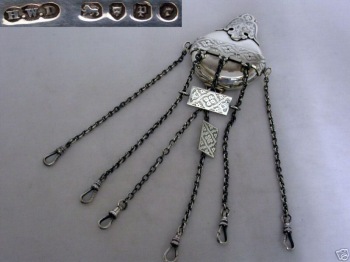
|
CHATELAINEThe silver chatelaine is an
ornamental clasp worn in daytime
at a woman's waist, attached to
a belt of girdle with a
hook-plate from which are
suspended several (usually five
but up to nine) shorts chain
terminating with rings of swivel
catches to which are attached
various small objects for daily
household use.........
|
"A BOOK ON MY SHELF"
In this column we present books, new or ancient, dealing with silver in all its aspects (history, marks, oddities...). This isn't a "book review" but only a fair presentation of some useful "tools" that anyone may have in the shelf of his bookcase.
(click to enlarge images)
History of
OLD SHEFFIELD PLATE
by Frederick Bradbury
printed by
MACMILLAN AND CO. LTD.
St. Martin's Street, London
1912
Closing our DECEMBER 2007 edition of ASCAS Newsletter I hope you have appreciated its content.
Your comments, suggestions and advice will be of great help.
My thanks to Ben Arnold (USA), Linda Drew (USA), John C. Fitzgerald (Australia), Damien Francois (Belgium), Christophe Ginter (France), Robert Massart (Belgium), Willand Ringborg (Sweden), Deb Sacco (USA), Fredric Sinfield (Australia), Dave Weinhandl, JoAnne Wilkinson (USA), Paulina Wojdak (Poland), for their invaluable contributions.
Giorgio Busetto
Secretary
ASCAS is a community of
people having a common interest
in antique silver.
|
|
|
